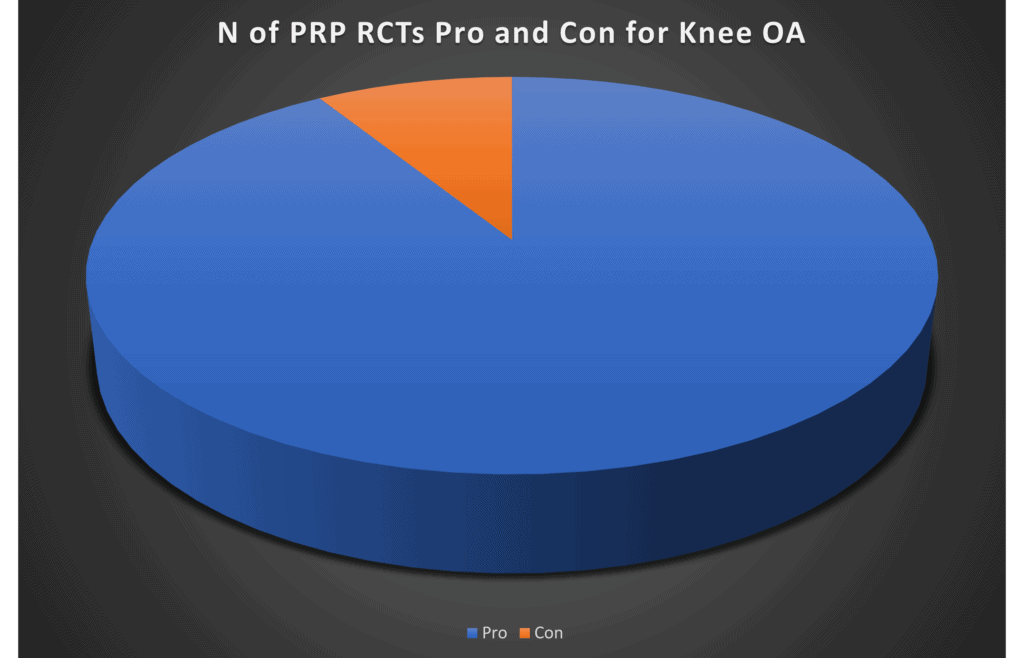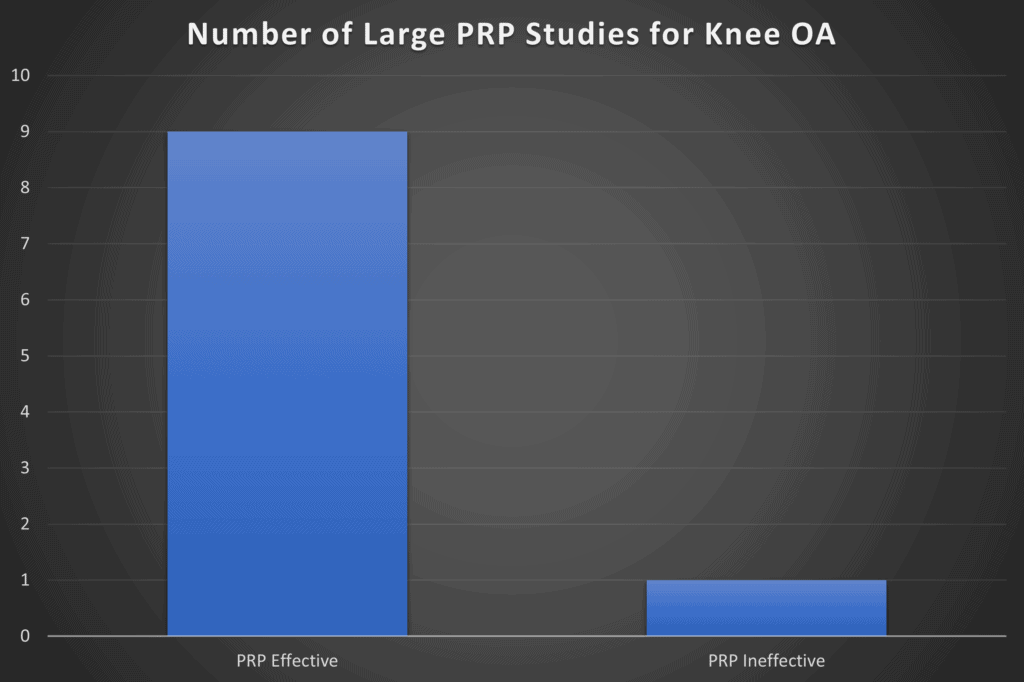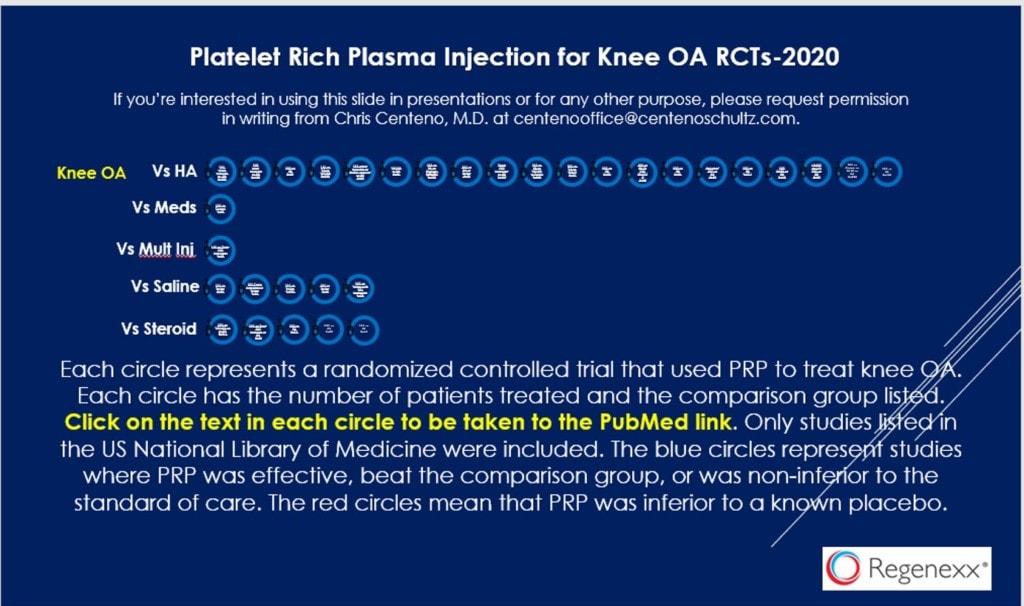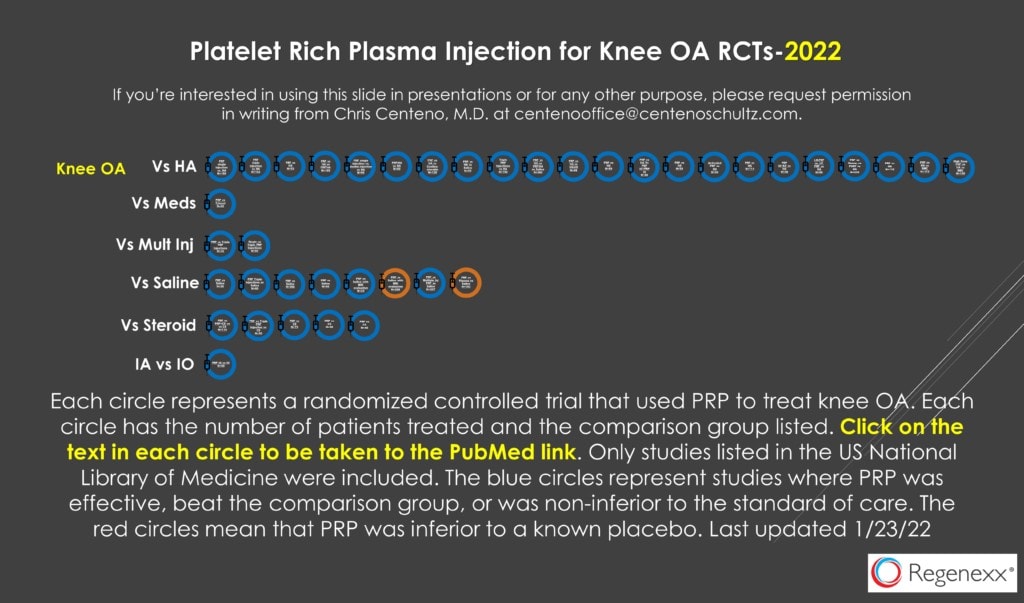An Update on RCTs for Knee Osteoarthrtitis
Two years ago, I summarized all of the RCTs for PRP used to treat knee arthritis. It’s now time for an update, especially with the recent craziness around fake PRP studies. Let’s dig in.
What Is an RCT?
The top level of research quality is called an RCT or Randomized Controlled Trial. Usually, two treatments are compared and the study participants are randomly assigned to one group or the other. The type of patients admitted and how they’re treated is rigorously controlled.
My 2020 Infographic
Shortly after Google bowed to pressure from academics who didn’t like the fact that PRP was competing with their licensed technologies winding their way through the FDA gauntlet, I put together an infographic that summarized all of the research on PRP used to treat knee arthritis (OA or osteoarthritis). It found more than two dozen studies that compared PRP to various controls like saline or hyaluronic acid. All of these showed that PRP helped knee OA:
If you click on the image above, you get taken to a PDF and each circle is a link out to a study. The studies are listed by their category, for example, “Vs HA” means that the study compared the efficacy of PRP versus HA for the treatment of knee OA.
The Fake PRP Study Issue
I’ve blogged already on new studies that purported to use PRP but really used something much less concentrated (i.e. Bennell et al) that didn’t meet the definition. These fake PRP studies showed that what they used didn’t work. However, even if a footnote is needed, those studies have to be added into the total body of PRP literature, hence it was time for an update.
My 2022 Infographic
Here’s my latest PDF summarizing everything I found in the US National Library of Medicine as of yesterday:
There are now 39 RCTs (there were 32 in 2020) with 37 showing that PRP is effective in the treatment of knee OA (blue circles) and 2 showing that it didn’t work (red circles). One of those is a small study comparing PRP to plasma and saline. The other is the Bennell et al study I have already reviewed on the blog.
Here is the total number of patients (n) represented above that were part of studies where PRP worked (Pro) versus PRP was ineffective (Con):

If we just include larger studies of 150 patients or more in the same league as Bennell et al, this is that comparison:

If we increase that to 200 patients, then it’s 4 to 1.
The upshot? PRP RCTs continue to show overwhelming evidence that the treatment is safe and effective for the treatment of knee osteoarthritis. There’s so much published to date that’s it’s hard to draw any other conclusion. However, even if the Bennell et al study didn’t use PRP, given that it claimed to, it needs to be included in the body of literature, even if it needs a major footnote.

NOTE: This blog post provides general information to help the reader better understand regenerative medicine, musculoskeletal health, and related subjects. All content provided in this blog, website, or any linked materials, including text, graphics, images, patient profiles, outcomes, and information, are not intended and should not be considered or used as a substitute for medical advice, diagnosis, or treatment. Please always consult with a professional and certified healthcare provider to discuss if a treatment is right for you.


